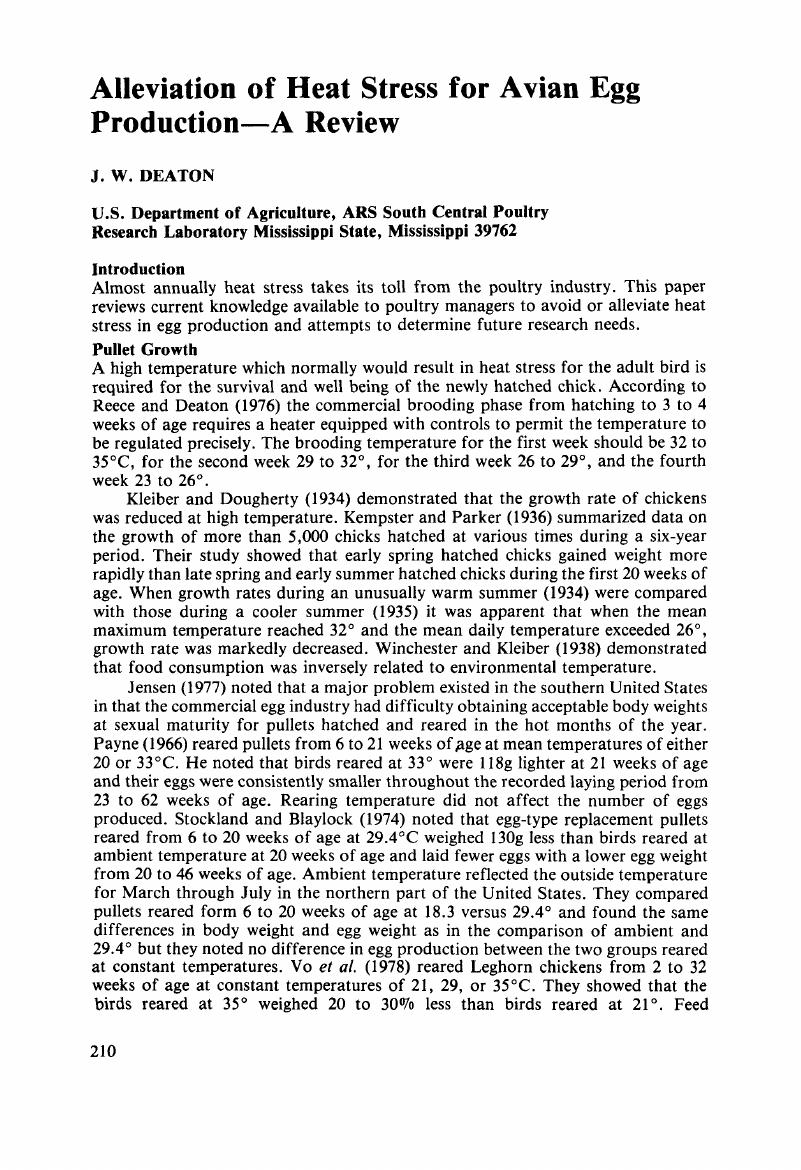Crossref Citations
This article has been cited by the following publications. This list is generated based on data provided by Crossref.
MÄNNER, K.
and
WANG, K.
1991.
Effectiveness of Zinc Bacitracin on Production Traits and Energy Metabolism of Heat-Stressed Hens Compared with Hens Kept Under Moderate Temperature.
Poultry Science,
Vol. 70,
Issue. 10,
p.
2139.
Degen, A. A.
Kam, M.
and
Rosenstrauch, A.
1992.
Effect of restricted cooled drinking water on the performance of broiler breeder hens in a hot, dry climate.
British Poultry Science,
Vol. 33,
Issue. 5,
p.
917.
Spinu, M.
Degen, A. A.
and
Rosenstrauch, A.
1993.
Effect of warm drinking water on the performance and immunological responses of broiler breeder hens raised at low air temperatures.
British Poultry Science,
Vol. 34,
Issue. 2,
p.
361.
Degen, A. Allan
and
Kam, Michael
1998.
Roosters Prefer Cool Drinking Water in Both Summer and Winter.
Journal of Applied Poultry Research,
Vol. 7,
Issue. 3,
p.
258.
Mtileni, B.J.
Nephawe, K.A.
Nesamvuni, A.E.
and
Benyi, K.
2007.
The Influence of Stocking Density on Body Weight, Egg Weight, and Feed Intake of Adult Broiler Breeder Hens.
Poultry Science,
Vol. 86,
Issue. 8,
p.
1615.
Nahashon, S.N.
Adefope, N.
Amenyenu, A.
Tyus, J.
and
Wright, D.
2009.
The effect of floor density on growth performance and carcass characteristics of French guinea broilers.
Poultry Science,
Vol. 88,
Issue. 11,
p.
2461.
Nahashon, S.N.
Adefope, N.
and
Wright, D.
2011.
Effect of floor density on growth performance of Pearl Grey guinea fowl replacement pullets.
Poultry Science,
Vol. 90,
Issue. 6,
p.
1371.
Deng, W.
Dong, X.F.
Tong, J.M.
and
Zhang, Q.
2012.
The probiotic Bacillus licheniformis ameliorates heat stress-induced impairment of egg production, gut morphology, and intestinal mucosal immunity in laying hens.
Poultry Science,
Vol. 91,
Issue. 3,
p.
575.
Garner, J.P.
Kiess, A.S.
Mench, J.A.
Newberry, R.C.
and
Hester, P.Y.
2012.
The effect of cage and house design on egg production and egg weight of White Leghorn hens: An epidemiological study.
Poultry Science,
Vol. 91,
Issue. 7,
p.
1522.
Sharma, Astha
Kumar, B. V. Sunil
Dash, Shaktikant
Singh, Satparkash
and
Verma, Ramneek
2020.
Heat shock protein B1 expression is associated with age at sexual maturity in Rhode Island Red and Punjab Red layers under heat stress.
International Journal of Biometeorology,
Vol. 64,
Issue. 7,
p.
1133.





